Sweetpotato Central
From their name to their production, look below to become an expert on sweetpotatoes!
What’s In a Name?
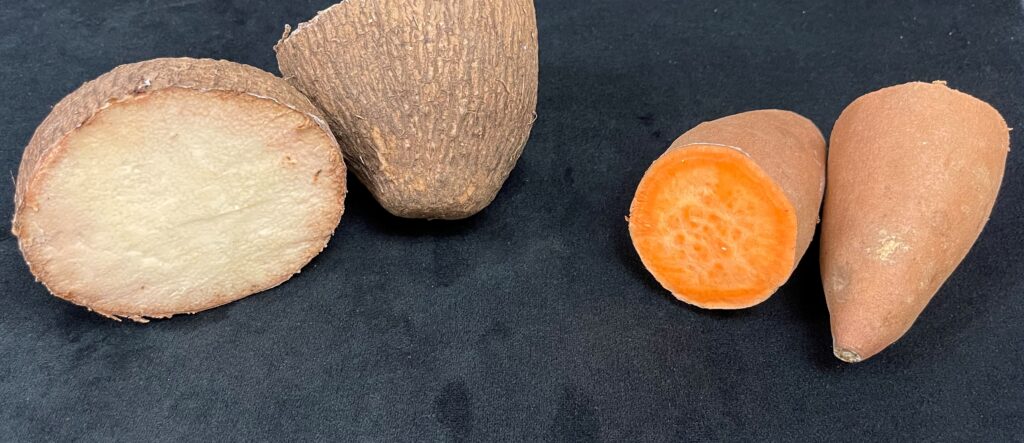
Right: Covington Sweetpotato (Ipomoea batatas)
Credit: Sam Mowery
Sweetpotato (Ipomoea batatas) is in the morning glory family, Convolvulaceae. The specific epithet, batatas, may be derived from the word “batata” in the Taíno language which means sweet potato (Nin, 2020). Although the colloquial name, sweet potato, includes the term “potato”, sweet potatoes are distant relatives to the common or Irish white potato that many of us in the United States know and love. In fact, the common potato (Solanum tuberosum) is only related at the order level (Solanales). In a similar vein, sweet potatoes are also called yams in the United States, particularly in and around the state of Louisiana. In actuality, sweet potatoes are not true yams and are not even closely related to true yams! True yams are within the genus Dioscorea, in the order Dioscoreales, meaning they are not closely related at all!
Fun Fact: Louisiana sweetpotato farmers started using the term “yam” several decades ago as a national marketing tool to help distinguish their variety from those grown on the East Coast!
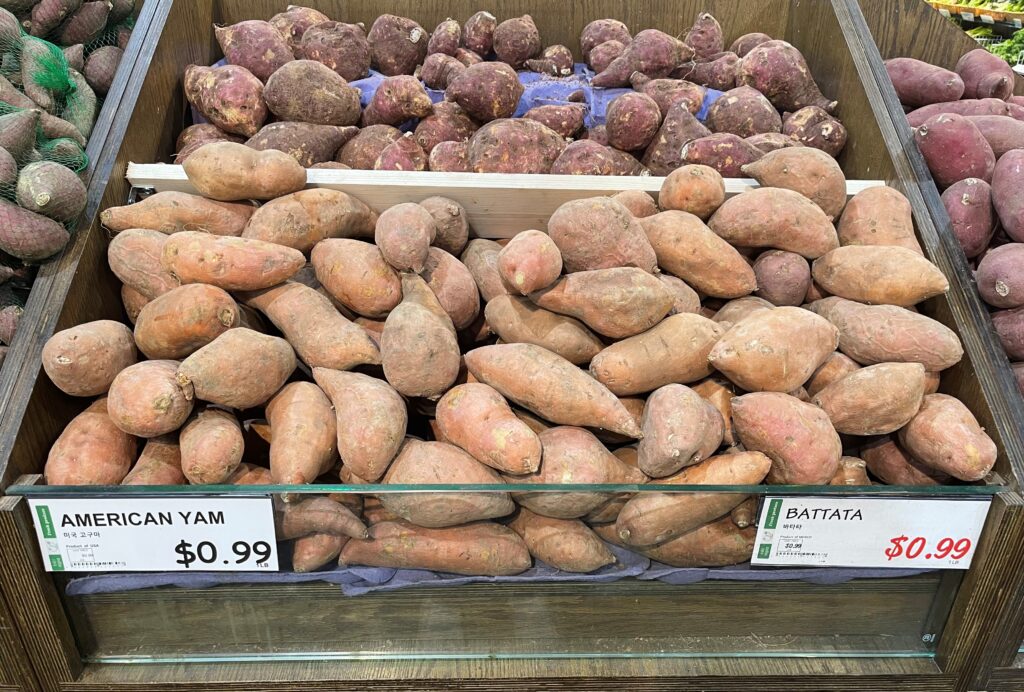
Credit: Sam Mowery
Characteristics of the Sweetpotato Plant
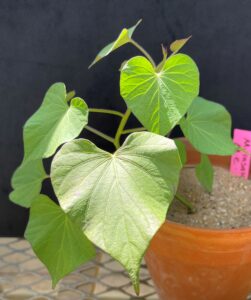
Credit: Sam Mowery
I. batas is characterized by green, often ranging from dark to light green, sprawling, vining foliage. The foliage varies depending on the cultivar that is grown; however, most plants have cordate (heart-shaped) or palmate (hand-like) leaves with white or purple tube-like flowers that look like morning glories. Ornamental cultivars, those utilized for their desirable foliage, have incredibly diverse foliage with colors ranging from purple to bronze to green!
Regarding the below-ground plant material, the plant produces various fibrous roots. The fibrous roots are long, thin roots that primarily function for nutrient and water uptake from the soil. The plant also produces many tuberous or storage roots. The storage roots are large, thick roots that function for the storage of carbohydrates.
Although sweetpotatoes do produce flowers and subsequently produce seeds, sweetpotato seeds are not traditionally used for growing more sweetpotatoes. Sweetpotatoes are actually propagated vegetatively! For this process, storage roots are placed into the soil as “seed roots”, where sweetpotato shoots will begin to grow from the storage root and out of the soil. From there, small stem or shoot cuttings called slips will be trimmed off of the plant. These slips can then be planted into the soil, where a new plant will begin to grow.
The storage roots are widely considered the main edible portion of the sweetpotato plant, which makes them the most economically significant portion of the sweetpotato plant. However, young shoots and leaves are often consumed in various cultures around the world!
Fun Fact: The storage roots come in various colors, both inside and out! In the United States, the most popular sweet potato cultivars are those that are orange-fleshed and have rose-colored skin. Although this is the case, storage roots can be purple-fleshed, white-fleshed, or even yellow-fleshed and their skin can range from purple to rose to tan!
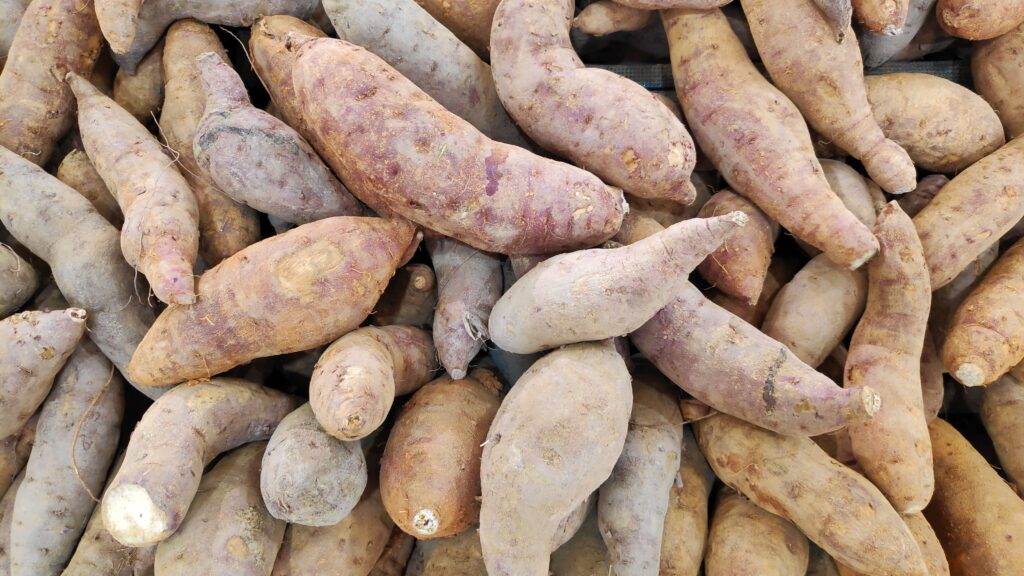
“Sweet potatoes 2” by Melsj / CC BY-SA 4.0
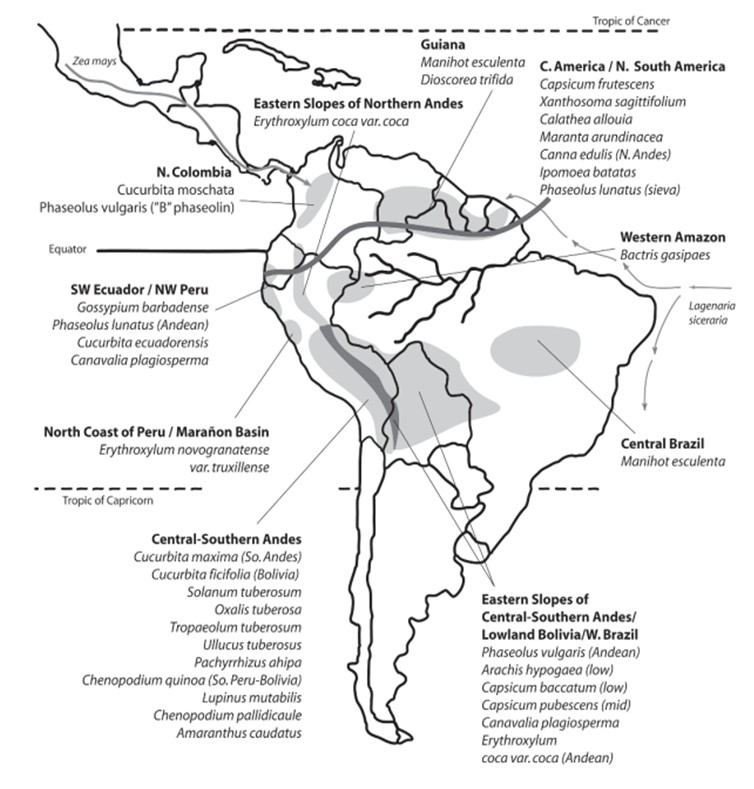
Credit: Kristin Smart (Silverman and Isbell, 2008)
Distribution and Native Range
I. batas is native to the tropical regions of Central and South America. It is believed that sweet potatoes were domesticated as early as 8000-6000 BCE in the Peruvian highlands (Silverman and Isbell, 2008). Following the sweet potato’s domestication, the slips or cuttings were often distributed throughout the world to other warmer regions, including areas as far away as Polynesia and New Zealand! Today, many countries, including those outside of the typical tropical or subtropical native climates, cultivate and produce sweet potatoes. Some of these countries include the United States, China, Japan, Vietnam, and Papua New Guinea.
Sweetpotato Breeding
Sweet potato breeding programs at both Louisiana State University and North Carolina State University have worked hard to develop different sweet potato cultivars that are intended to meet the demand of consumers and growers. The North Carolina and Louisiana project members consider important factors for cultivar development including aesthetics like root shape, root size, root color, and metrics for consumption like sugar content, taste and flavor profile, and texture. Additionally, there are factors regarding disease that are considered including resistance to nematodes, fungi, bacteria, viruses, and insect pests.
Learn more about the sweetpotato breeding process and commercially available sweetpotato cultivars.
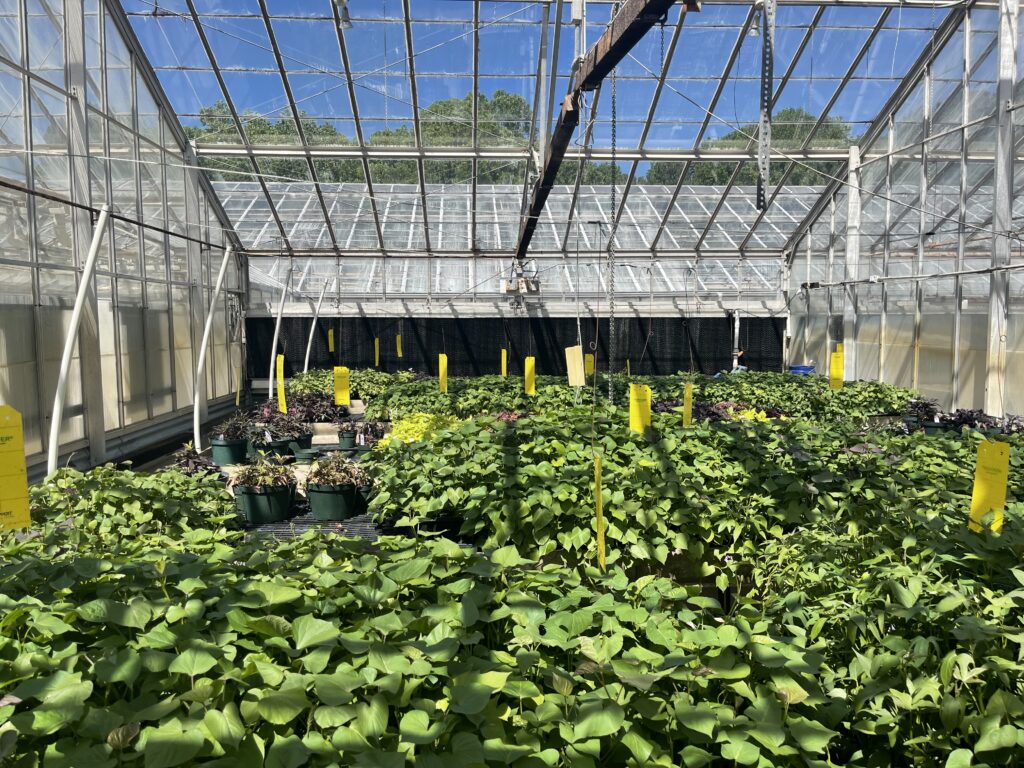
Credit: Sam Mowery
Sweetpotato Production
Various factors contribute to successful sweetpotato production. Factors can range from sweetpotato cultivar genotypes and phenotypes to management of the abiotic environment to the management of diseases or weed species. In addition to the plethora of factors that impact sweetpotato production, growers must take into consideration the factors that cannot be manipulated such as the ambient temperature or the weather.
Learn more about factors that impact sweetpotato production.